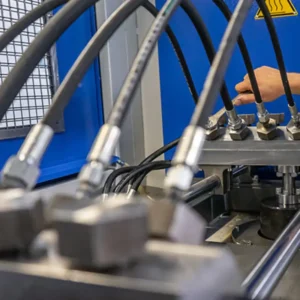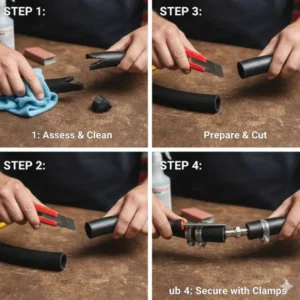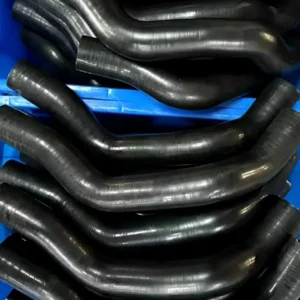Whether it’s plumbing, automotive, or gardening, choosing the right hose type can have a significant impact on the project’s lifespan and performance. We often face a seemingly simple question: Should I use a braided hose or a standard hose? This choice is more critical than you might think, affecting everything from pressure resistance to durability.
In this guide, we’ll delve into the fundamental differences between these two types of hose to help you make an informed decision for your next project.
What is Standard Hose?
Standard hose, often referred to as a single-ply or unreinforced hose, is the most basic type available. It’s typically a single tube made of materials like PVC, rubber, or silicone. This design is simple and cost-effective, making it a common choice for applications where pressure is low and the environment is not demanding. We’ve all seen and used these hoses for everyday tasks, but their simplicity comes with certain limitations.
The Anatomy of a Braided Hose
Braided hoses differ from standard hoses by adding a layer of reinforcement. A standard inner tube is surrounded by a braid, which can be made from a variety of materials, most commonly stainless steel, nylon, or polyester. The braid is then encased in an outer jacket. This layered construction is key to its superior performance, providing strength and resistance to external and internal forces.
Braided Hose vs Standard Hose: What You Need to Know
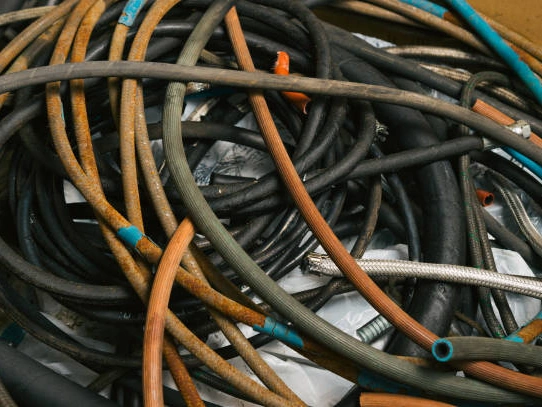
Navigating the choice between a braided and a standard hose requires a clear understanding of their respective strengths and weaknesses. Here’s a head-to-head comparison to help you visualize the key distinctions in terms of performance, durability, and cost.
| Feature | Braided Hose | Standard Hose |
| Pressure Resistance | High | Low |
| Durability | Excellent (Resists kinking, abrasion, and punctures) | Good (Prone to kinking and wear) |
| Flexibility | Less flexible (due to reinforcement) | More flexible |
| Cost | Higher | Lower |
| Appearance | Often industrial and clean (e.g., stainless steel) | Basic, often opaque or translucent |
| Common Applications | High-pressure plumbing, automotive fluid lines, hydraulic systems | Gardening, simple water lines, low-pressure air lines |
Durability and Longevity
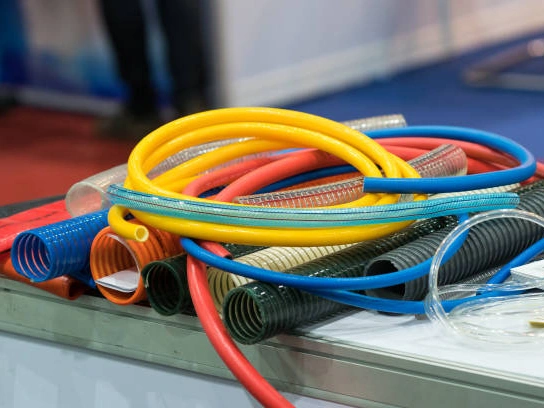
When discussing the long-term performance of your project, durability is a non-negotiable factor. A braided hose excels in this area. The external braiding acts as a shield, protecting the inner tube from external damage like cuts, abrasions, and punctures. This makes them ideal for environments where the hose might be dragged across rough surfaces or exposed to sharp objects.
On the other hand, a standard hose is much more vulnerable. A simple kink can permanently damage the hose, restricting flow, and a small puncture can render it useless. While they are a good fit for temporary or low-stress applications, their lifespan is generally much shorter than that of their reinforced counterparts.
The Battle of Pressure and Flow Rate
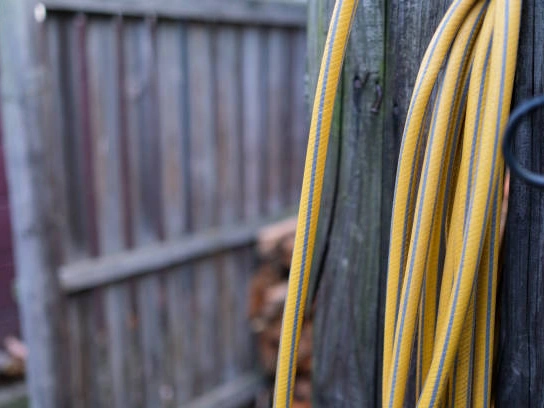
One of the most significant advantages of a braided hose is its ability to handle high pressure. The braided layer provides structural integrity, preventing the hose from expanding or bursting under pressure. This is why you’ll find them in critical systems like hydraulic lines, brake lines, and high-pressure water systems.
A standard hose, without this reinforcement, can only withstand a limited amount of pressure before it starts to swell or, worse, fail catastrophically. The lack of a support layer means they are not a viable option for any application that involves significant pressure.
Flexibility and Kinking
Another key difference is flexibility. Because of their layered construction, braided hoses are inherently less flexible than standard hoses. This can be a pro or a con, depending on your application. For installations where the hose needs to maintain a specific, rigid shape, this lack of flexibility is a benefit. However, for tasks that require a lot of bending and maneuverability, a braided hose can be more difficult to work with.
Standard hoses, by contrast, are highly flexible. This makes them easy to coil, store, and navigate around corners. However, this same flexibility makes them susceptible to kinking. Kinking not only restricts the flow but can also cause permanent damage to the hose’s structure.
Practical Applications
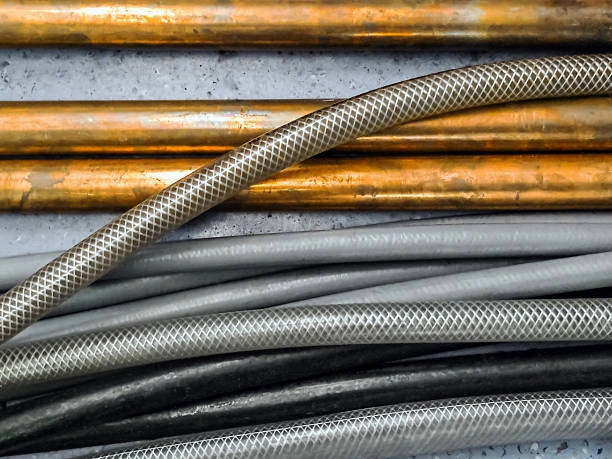
Which one you choose depends entirely on your specific needs. Here are some common scenarios to help you decide.
- You’re working on a high-pressure automotive project. For things like brake lines, fuel lines, or coolant systems, a braided stainless steel hose is the clear winner. Its ability to withstand high pressure and temperature is essential for safety and performance.
- You need a simple, cost-effective hose for your garden. A standard hose is likely all you need here. It’s affordable, easy to use, and perfect for watering plants or washing your car.
- You’re dealing with a hydraulic system. The immense pressure in these systems makes a braided hose a necessity. Using a standard hose would be incredibly dangerous and would lead to immediate failure.
- You need a durable, long-lasting hose for industrial use. In an industrial setting where hoses are subject to constant wear and tear, a braided hose offers the durability and resistance to abrasion that a standard hose simply can’t.
The Cost Factor
It’s no secret that a braided hose comes with a higher price tag than a standard hose. This is due to the additional materials and manufacturing processes involved in its construction. However, when you consider the cost in terms of longevity, performance, and safety, the investment often pays for itself. A single-use, cheap hose might save you money upfront, but a more durable braided hose will save you from costly repairs and replacements down the line.
Conclusion
Choosing between a braided hose vs standard hose is a matter of understanding your project’s specific needs. For low-pressure, everyday tasks, a standard hose is a perfectly suitable and cost-effective choice. However, for any application that involves high pressure, extreme temperatures, or a demanding environment, a braided hose is the only logical and safe option. By considering factors like pressure, durability, and cost, you can confidently select the right hose and ensure your project’s success.

